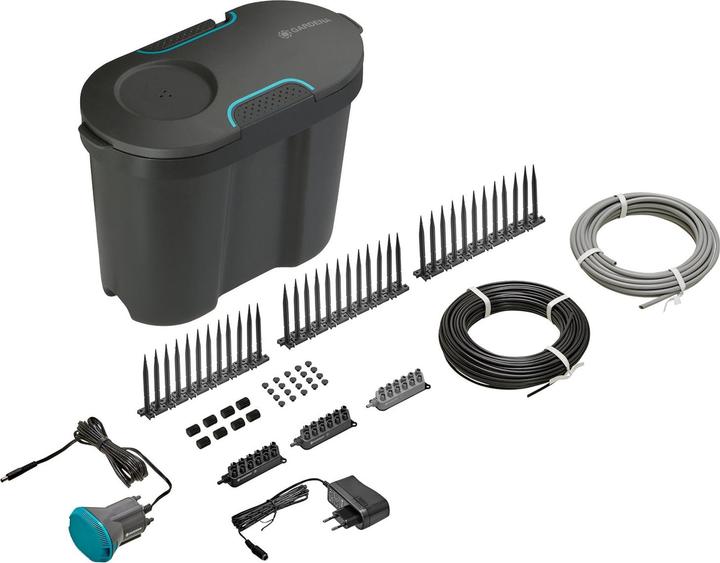

Houseplants alone at home: does automatic watering work?
Want to go on holiday without your houseplants drying out? Gardena’s automatic watering system is designed to do just that. Here’s my review.
Plants are like pets – if you’re traveling, you need someone to look after them. It’s usually your mum but she gets stressed. Or the neighbour forgets and they dry up. So an automatic holiday watering system that can meet the needs of plants with different water requirements sounds tempting. But I have to admit, until now I thought the idea was weird: connecting plants to «infusion tubes»? And you have to set all the tubes up yourself? No, thanks.
Luckily, this handy thing was forced upon me.
At a recent media event organised by Gardena, I was allowed to put together an irrigation system piece by piece. I was as untalented as I was with Lego sets. But somehow it was fun. And in the end, Gardena sent me their holiday watering system for houseplants to test.
From the pump to the distributors...
It wasn’t long before I was sat face to face with the system. I opened the instruction manual and could only see picture descriptions. Turns out, they’re easy to understand. The first thing I reached for was the pump with three connections. This allows you to connect the following drip distributors to a total of 36 plants:
- Distributor 1: 15 millilitres, plants with low water requirements (light grey)
- Distributor 2: 20 millilitres, plants with medium water requirements (grey)
- Distributor 3: 30 millilitres, plants with high water requirements (dark grey)
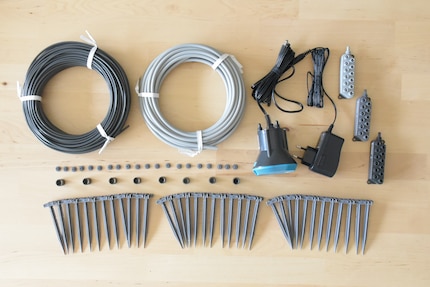
Their different shades of grey made it easy for me to distinguish the distributors. I chose distributor 1 because I have a lot of drought-loving succulents. Then, to connect it to the pump, I cut the light grey hose to the right length. Note: It’s important that you do this at a 90-degree angle, i.e. in a straight line. It worked. I was then able to screw one end of the hose onto the pump opening and the other onto distributor 1.
In addition to the succulents, I also have a few plants that need a little more water. These were my next point of call. I grabbed distributor 2 and connected it to the second pump opening via the remaining piece of hose. I put the lid on the third, unused opening and the distributor 3 to one side because I didn’t need these.
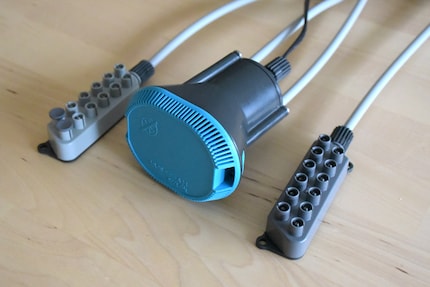
...and from the distributors to the plants
All that was left to do then was to connect them to the plants. Surprisingly, even with two left hands, I enjoyed assembling it. I cut twelve pieces of hose of different lengths which is the maximum you can connect to a single distributor. Again, I paid attention to the 90-degree angle. I then stuck them close to the roots with pipe pegs. Tip: If you don’t need all twelve distributor connections, you can close them with small covers.
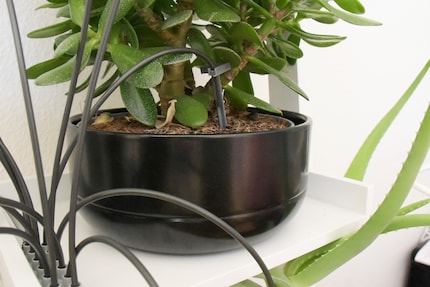
There’s just one issue: the distributors are so flimsy that they don’t stay upright by themselves, but dangle in the air or sometimes upside down. So I fixed them to my plant shelf with adhesive tape. Then, for the final step, I placed the pump in the still empty water reservoir left the two grey hoses and the power connection hanging out at the top.

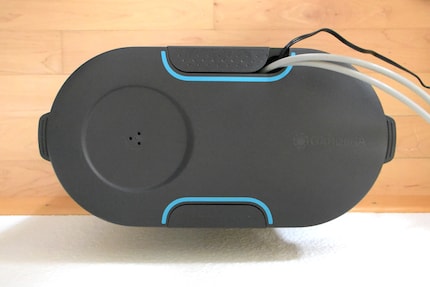
Let it flow
Time for action. I filled the reservoir to the brim. It holds 10.5 litres. Then I closed the lid and plugged in the power cable. It was 5 p.m. when I connected it, which means the holiday watering system waters my plants at precisely this time every day. Unless I unplug it and plug it in again at another time.
After a few seconds, something started to happen. The pump was humming and the hoses moved. The water had began flowing straight to the distributors and from there to the plants. Then I saw it: the first droplet of water falling onto the soil. Followed by another, and another. After a minute it stopped – irrigation was done for the day.
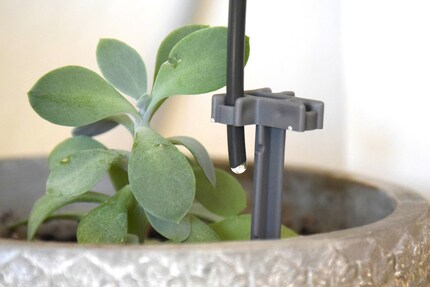
The question of quantity
The droplets continued to fall punctually at 5 p.m. on the following days. I checked every day to make sure nothing went wrong. That was my initial fear. And the reason why I wanted to test the system before going away on holiday. Yet it all remained secure. Even when my two cats occasionally messed with the hoses.
I was also worried about the amount of water. In small pots, 15 millilitres per day isn’t exactly a small amount. After two weeks away, a total of 210 millilitres should have ended up in the pot. So almost a whole, small watering can. For medium water consumption, it would be 280 millilitres and for high water consumption an entire 420 millilitres. Will my UFO plant be sitting in water? My test would say yes. The little pot was just too small.
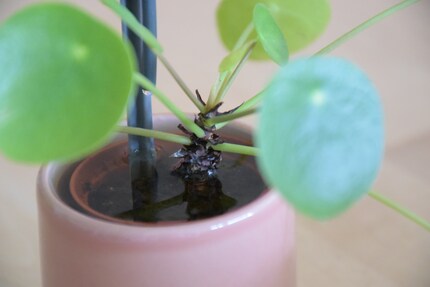
Is less water possible?
It’d be great if it were possible to adjust the watering rhythm more individually for drought-loving houseplants in smaller pots. For particularly thirsty plants, you can trick them by feeding several hoses into one pot. Unfortunately, extended or shortened watering intervals are only possible with the Smart Water Control Set watering device from Gardena for outdoor plants.
Which automatic watering system for houseplants can you recommend? Let know in the comments.
In a nutshell
Practical with just a few minus points
Pro
- Simple installation
- Distributors for low, medium and high water requirements
- Good sealing
- Simple to adjust and dismantle
- Flexible tube lengths
- Suitable for up to 36 plants
Contra
- No individually adjustable watering rhythm
- Distributors don’t lie flat

I love anything with four legs or roots - especially my shelter cats Jasper and Joy and my collection of succulents. My favourite things to do are stalking around with police dogs and cat coiffeurs on reportages or letting sensitive stories flourish in garden brockis and Japanese gardens.


